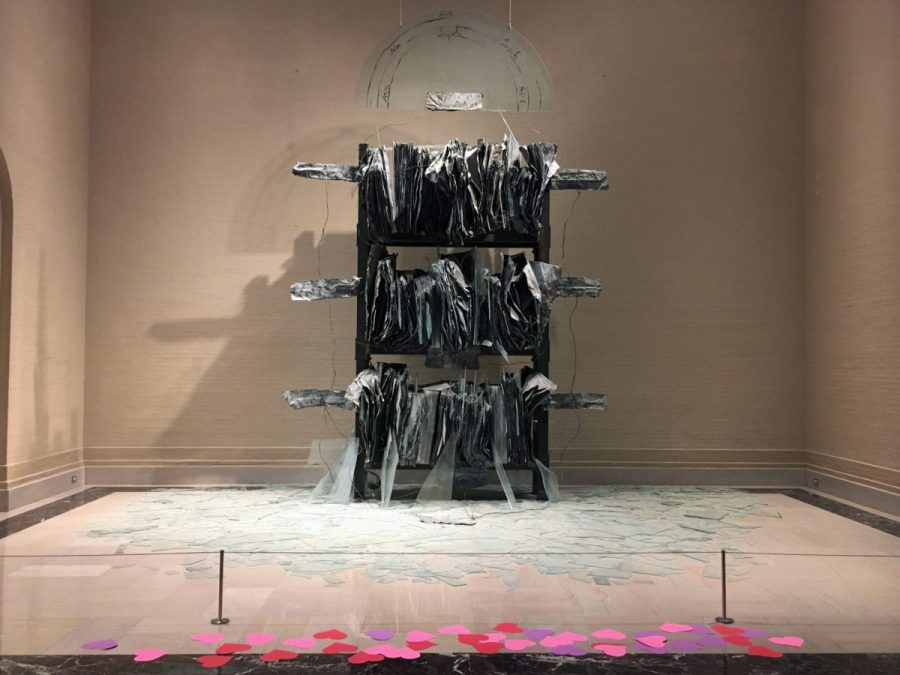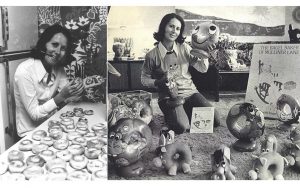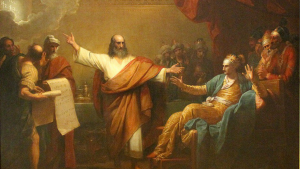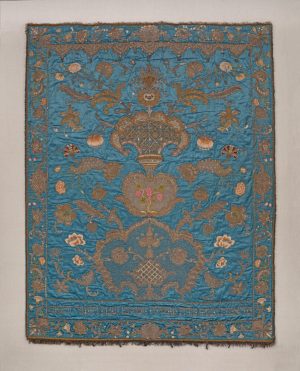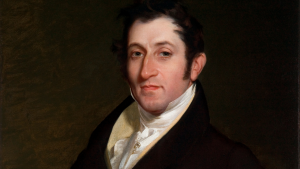The Jewish story behind SLAM’s ‘Breaking of the Vessels’ masterpiece
Published August 16, 2021
The St. Louis Art Museum (SLAM) is home to many masterpieces, but perhaps none are more important than the sculpture titled, “Breaking of the vessels” made by one of the most accomplished artists of our time.
“Anselm Kiefer was born in Germany in 1945, was not Jewish, but his art is filled with Jewish references,” said artist Dale Sharon, a 25-year docent at the St. Louis Art Museum, and former SLAM Board of Trustees member. ” His works are characterized by an unflinching willingness to tackle his culture’s dark past in works that are often done on a large, confrontational scale.
Breaking The Vessels
Large is an understatement when viewing “Breaking the vessels.” Weighing over seven tons and standing 17 feet tall, the work shows lead book folios and broken panes of glass filling the shelves of a monumental bookcase. The lead books reference the centrality of learning to Jewish culture, while other elements of the sculpture represent ideas put forth in the Kabbalah, a collection of ancient Jewish mystical writings.
ADVERTISEMENT
Above the bookcase you’ll see a suspended semicircular pane of glass representing the spirit of G-d and is inscribed with the Hebrew words “Ain Soph Aur,” meaning “Infinite Light.” According to kabbalistic tradition, attributes of G-d’s light were divided among 10 vessels not strong enough to hold them. The destruction or breaking of the vessels brought the Divine into an imperfect world.
“Though he had no first-hand memory of the catastrophic rule of the Third Reich, Kiefer’s strategy is to open a Pandora’s box of fascist imagery,” said Sharon. “Keifer has made a successful career out of facing up to the political injustices of the world, particularly the fascist regimes’ atrocities that were committed against the Jews during World War II.”
The shattered glass projecting from the shelves and littering the floor beneath the bookcase recalls Kristallnacht (the Night of Broken Glass) in Germany, when civilians and Nazi paramilitary officers smashed thousands of synagogue windows and Jewishowned storefronts on November 9 and 10, 1938. The charred books reference the Burning of the Books by the Nazis, the destruction of wisdom. Burning was a method of purification as well as destruction and so alchemy is a theme he often explores.
ADVERTISEMENT
“His work is interwoven with layers and layers and layers and layers of meaning, with metaphors from a wide range of sources, from Jewish liturgy to history to mythology,” said Sharon. It is filled with political and mystical meaning, references to the past as well as the future. Many have interpreted this magnificent sculpture in different ways. This is my understanding.”
Inspiration
According to Public Delivery, a not-for-profit arts organization, the sculpture was conceived out of a collaboration between Kiefer and Mordechai Omer, the chief curator of the Tel Aviv Museum. A new museum wing was to be opened at the time, and Omer wanted to commemorate it with an exhibition of both spiritual and artistic value. The works selected for the inaugural show were supposed to have some biblical connection or relate in one way or another to Jewish folklore, literature, or the Kabbala.
“Breaking of the Vessels is so highly regarded that most art history textbooks today feature this dramatic work prompting the historian Simon Schama to comment that Kiefer is “incapable of making anything trivial,” said Sharon.



